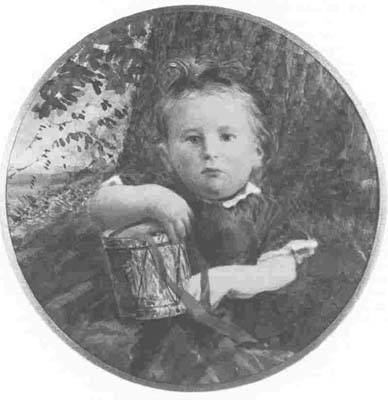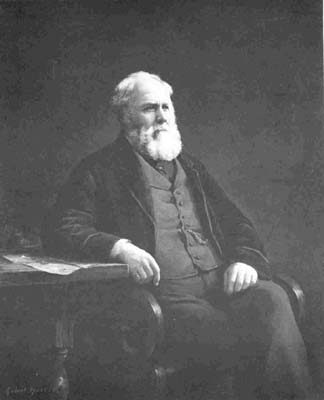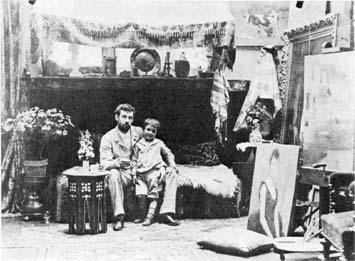
Bulletin 20, 1972
Home
Français
Introduction
History
Annual Index
Author &
Subject
Credits
Contact






Museum,
McGill University,
Montreal Notes on the Relationship of
Photography
and Painting in Canada, 1860-1900
by Ann Thomas
Résumé en français
Pages 1 | 2 |
3 | 4
With the invention of the camera
obscura in the sixteenth century and the invention of the
photographic process in the nineteenth, traditional patterns of visual perception and pictorial expression underwent
dramatic
transformations. The American scholar and critic, Van Deren Coke,
has in fact suggested that artists "begin to see the world
through the lens and not so much through their eyes," adding
that "the single lens does things to space, does things to the
artist's perception." (1) The vital and often curious interrelation between photography and painting has been documented for
British and American art of the nineteenth century, but little
more than one-paragraph references - often speculative ones at that
- exist for Canadian art of the same period.
In Canada as elsewhere, the influence of photography on painting
came about through such activities as the actual operation of a
camera, the developing of prints, the making of composite
photographs, and the painting of photographs. All these
activities, singly or in combination, had sometimes profound effects
on painters, giving them new compositional concepts, making them
aware of photographic tonality, encouraging overall rendition of
detail, and prompting a move away from painterly principles of
spatial relationships. These interrelations were most evident in
Canada in the work of those artists employed in the Montreal studio
of the photographer William Notman (1826-1891) as painters of
studio backdrops, colourists, and painters of the backgrounds for
composite photographs; and in the work of those painters associated with Notman's Toronto studio through their membership in the
Ontario Society of Artists. (2)
The dilemma of the nineteenth-century
portrait-painter - and thus of the nineteenth-century Canadian
portrait-painter- is well known. After 1839, as photography
developed, portrait-painters were increasingly usurped in function
by a mechanico-chemical process and had to re-define their role
in the face of an accomplished technological fact. This
re-definition began with a recognition of the failure of the camera to provide a flattering likeness of a sitter; though the
nineteenth-century public was vociferous in its demand for
faithful representation, it was not without its vanity. Only the
subtle hand of a portrait-painter could soften edges and erase
blemishes which a camera made all too apparent.
It is not surprising, then, that the colouring of photographs was
one of the most important commercial tasks that fell to such skilled
Canadian portrait-painters as John A. Fraser (1838-1898).
Fraser began to work for William Notman in Montreal in 1860,and the
four examples of his painted photograph portraits in the Notman
Archives show that he laid his watercolours over the pale
photographic image as though it were only a preliminary drawing.
Photographic line and tone speak for themselves under a very light
and transparent layer of colour and demonstrate Fraser's
sensitivity to the photographic image. The surface-quality of the
photograph is respected, and the transition from it to the painted
surface is not distracting. Fraser's Portrait of William Theodore
Benson (fig. I), however, is not simply a painted photograph but a painted composite made from a Notman source-photograph
(fig. 2). In the source, the boy is being held by his mother, who is
seated in a chair on which the child's right arm rests. In the
finished work, the image of the boy, after being excerpted,
enlarged, and re-positioned, is set in front of a tree, and his
right arm is made to rest on a painted drum. (The glass negative of
figure 2 was used to obtain the enlargement for figure I.)
Even in Fraser's
leisure-time painting, distinct as it was from his commercial work,
we see the influence of the "photographic aesthetic" as
recently defined by Elizabeth Lindquist-Cock: "The photographic
aesthetic means various things depending on the process used. In
general we might cite as typical of photography: objectivity, the
arbitrary cutting-off of foreground objects as in the snapshot
effect, a subdued range of lines, harsh lighting, a sense of stopped
time, etc. ..." (3) We do not know whether Fraser, as a painter,
derived his images from photographs, or whether he himself was
involved in the mechanics of photography; conflicting statements
on the subject have been recorded. The report on Canadian participation in the International Exhibition at Philadelphia in 1876
notes: "We give still more credit to Mr Fraser, the
Superintendent of the Art Department at the Centennial for the
many faithful and reliable photographs." (4) The implication is
the same at another point in the same report: "In a series of
cabinet portraits from Notman and Frazer [sic] of Toronto, of which
firm Mr Notman of Montreal is a partner but Mr. Frazer we presume
the active photographer, we have some unusually fine pictures and
novel effects." (5) Yet a clipping from an unidentified
newspaper, in the Fraser file at the Art Gallery of Ontario, says,
"It must be emphasized that Mr Frazer was not himself a
photographer but devoted himself entirely to colour
work." (6)
In contrast to Fraser, the Canadian painters Samuel C. Hawksett
(act. 1856-1903) and Joseph Dynes (1825-1897) must have been
involved in the actual processes of photography. (Dynes's knowledge
and use of photography could in fact have been extensive: from 1857
on he was a partner in three different photographic firms in
Montreal and Quebec, and worked for both Ellison [act. 1852-1879]
and Livernois [act. 1860-1861].) (7) Hawksett and Dynes opened their
studio in Montreal in the early 186os, advertising "Photographs
taken in all sizes and painted in Oil or Water Colours." (8) One
product of their apparently brief collaboration is a painted
photograph - Portrait of Alphonse Poitras - now in the
collection of the Château de Ramezay in Montreal. Several portraits
similar in technique, by Hawksett alone, have come to light; one, Master
John
Wiseman (1873), a small painted Notman photograph, gives an
indication that Hawksett may have worked for Notman after his
venture with Dynes ended.
Hawksett, unlike Fraser, attempts the complete transformation of the
photographic image. He does so in two ways: first, by pasting the
photographic paper on canvas and thus altering its physical characteristics; second, by handling the painting-over with little regard
for the linear and tonal qualities of a photograph. The
source-photograph, in short, has been made to look as much like a
painting as possible, and only the evidence of the layer of paper
and certain surface characteristics of a painted photograph belie
it. (9) Another of Hawksett's works, however, the Portrait of Mme
Charles Leclair (fig. 3), shows the rigid pose and hard-edge quality
more characteristic of the painted photograph in general.
Next
Page | transformation of
photographic image
1 |
2 | 3 | 4
Annual Index | Author & Subject | Credits | Contact
This digital collection
was produced under contract to Canada's Digital Collections program,
Industry Canada.
"Digital
Collections Program, Copyright
© National Gallery of
Canada 2001"